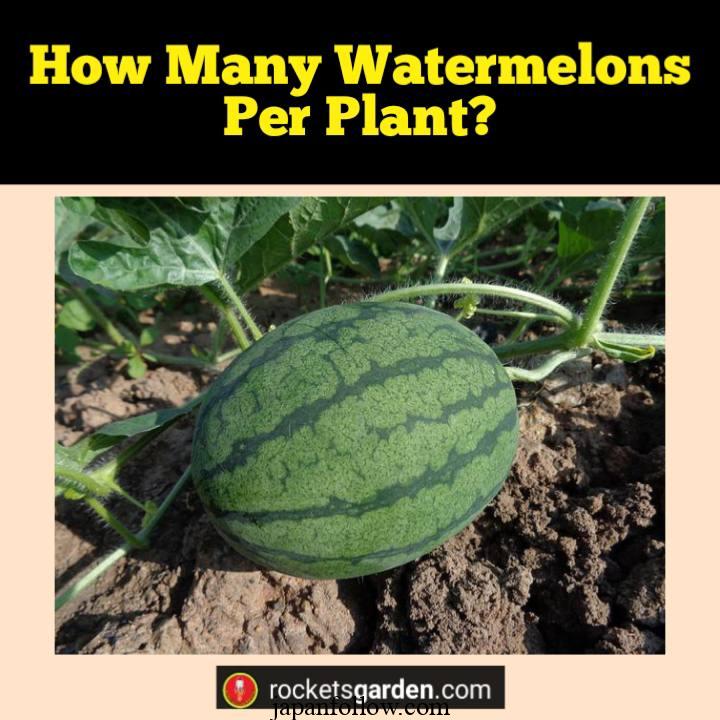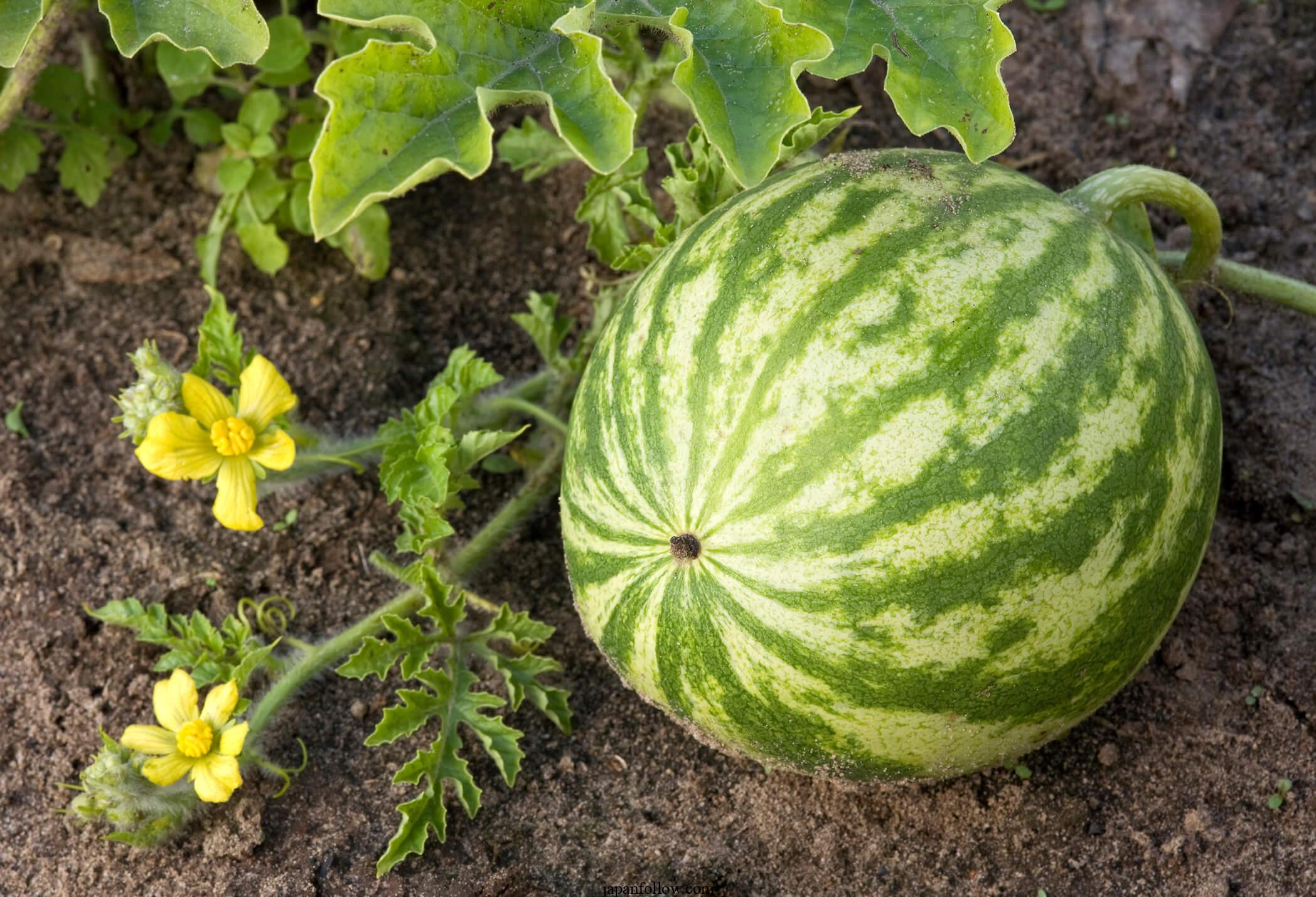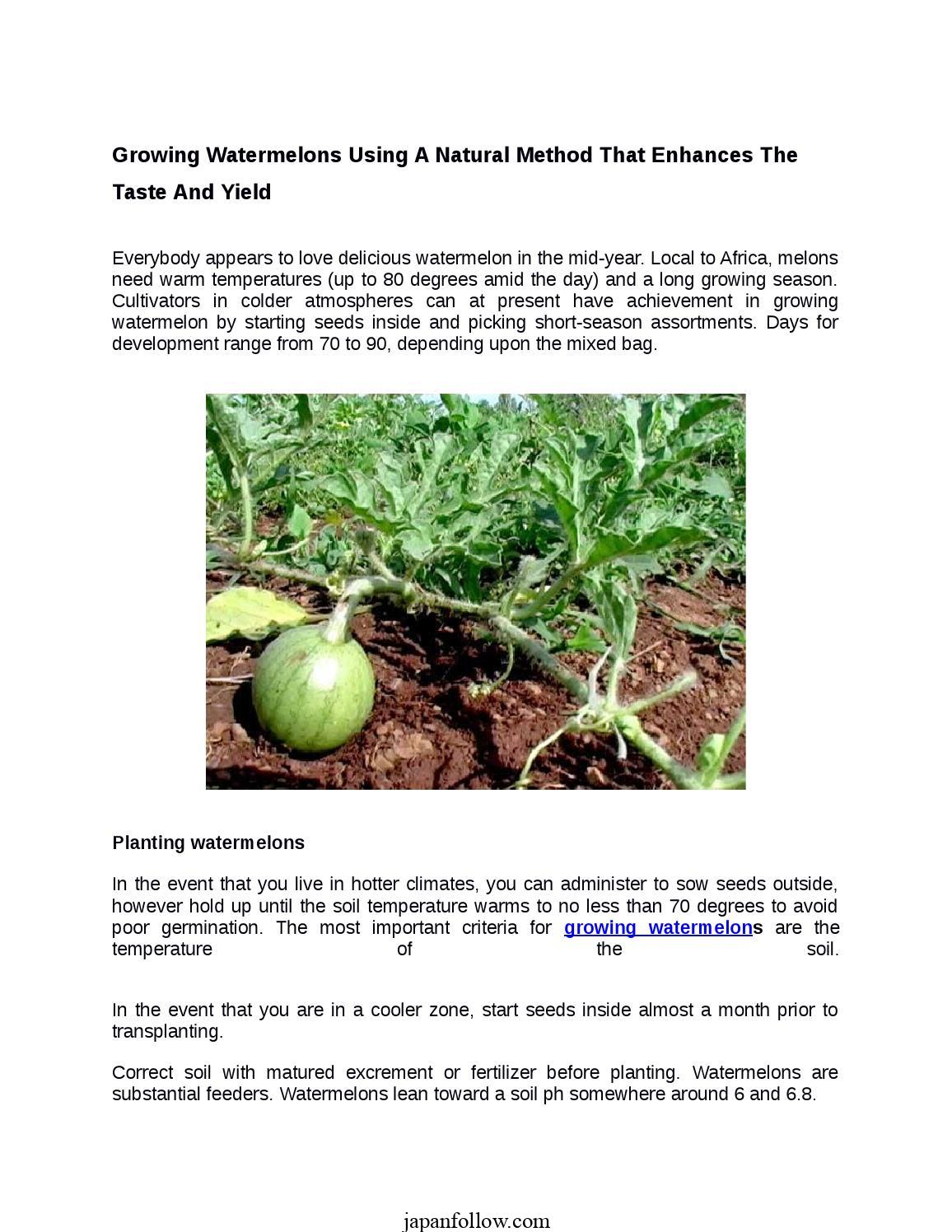
How many watermelons per plant? Tips to maximize production
Maximizing Watermelon Plant Production: Tips for Abundant Harvests Watermelons are a delightful summer treat, and nothing beats the satisfaction of biting into a juicy slice on a hot day. If you’re looking to grow your own watermelons and wonder how many watermelons per plant is possible, you’ve come to the right place. In this comprehensive […]
Maximizing Watermelon Plant Production: Tips for Abundant Harvests
Watermelons are a delightful summer treat, and nothing beats the satisfaction of biting into a juicy slice on a hot day. If you’re looking to grow your own watermelons and wonder how many watermelons per plant is possible, you’ve come to the right place. In this comprehensive guide, we’ll share valuable insights and tips on optimizing your watermelon plant’s production, so you can enjoy a bountiful harvest.
The Ideal Growing Conditions

Before diving into the specifics of watermelon plant production, it’s crucial to understand that the quantity of watermelons per plant depends significantly on the environmental factors and care you provide. To maximize your harvest, pay attention to the following:
1. Sunlight
Watermelon plants thrive in full sun. They require at least 6 to 8 hours of direct sunlight each day. Plant your watermelons in an area with ample sunlight exposure for optimal growth.
2. Soil Quality
Well-draining, loamy soil is the key to successful watermelon production. Ensure the soil is rich in organic matter and has a pH level between 6.0 and 6.8. Amending your soil with compost can enhance its quality.
3. Adequate Space
Watermelon plants are notorious for their sprawling vines. They need plenty of space to spread out. Allow at least 5-6 feet between each plant, and ensure rows are spaced about 6-8 feet apart.
Selecting the Right Watermelon Varieties

Not all watermelon varieties are created equal when it comes to production. Some are naturally more prolific than others. To boost your yield, consider planting the following watermelon varieties known for their high productivity:
1. Sugar Baby
Sugar Baby watermelons are a favorite among gardeners for their small size and sweet, juicy flesh. These compact plants produce an abundance of fruit, making them an excellent choice for limited garden space.
2. Crimson Sweet
Crimson Sweet watermelons are a classic choice known for their large, sweet, and crisp fruit. These plants are reliable producers and can yield multiple watermelons per vine when cared for properly.
Pruning for Increased Yield

Pruning is an essential practice to encourage more watermelons per plant. By removing excess foliage and lateral vines, you allow the plant to channel its energy into producing more fruit. Here’s how to do it:
- Identify the Main Vine: The main vine is the central stem of the plant. This is where most of the watermelons will form.
- Remove Lateral Vines: Lateral vines are the side branches that grow off the main vine. Prune these vines to redirect the plant’s energy toward the main vine and developing fruit.
- Limit the Number of Fruit: While it may be tempting to leave every watermelon to grow, it’s best to limit the number of fruit per plant. Choose one or two healthy, well-positioned watermelons per vine to ensure they reach their full potential.
Proper Watering Techniques

Watering is a critical factor in achieving a high watermelon yield. Here are some watering tips to keep in mind:
- Consistent Moisture: Watermelons require consistent moisture, especially during the flowering and fruit-setting stages. Keep the soil consistently moist, but not waterlogged.
- Use a Drip Irrigation System: Drip irrigation is an efficient way to deliver water directly to the plant’s root zone, preventing water wastage and minimizing the risk of fungal diseases.
- Water in the Morning: Water your watermelon plants in the morning to allow the foliage to dry during the day. Wet foliage in the evening can increase the risk of disease.
Fertilizing for Fruitfulness

Fertilization is another key aspect of maximizing watermelon plant production. Here’s what you need to know:
- Start with Rich Soil: Begin by preparing the soil with a balanced fertilizer containing essential nutrients like nitrogen, phosphorus, and potassium. This sets the foundation for healthy plant growth.
- Side-Dress with Nitrogen: Watermelons have a high demand for nitrogen. Side-dress your plants with a nitrogen-rich fertilizer when they start to vine and again when the first fruit forms.
- Monitor Plant Health: Keep a close eye on your watermelon plants. If you notice any signs of nutrient deficiencies, such as yellowing leaves, address them promptly with the appropriate fertilizer.
Pest and Disease Management
Pests and diseases can significantly impact watermelon plant production. To protect your plants and ensure a healthy harvest, follow these guidelines:
- Companion Planting: Plant companion crops like marigolds or nasturtiums to deter common watermelon pests, such as aphids and cucumber beetles.
- Inspect Regularly: Check your plants regularly for signs of pests or diseases. Early detection and intervention can prevent extensive damage.
- Practice Crop Rotation: Avoid planting watermelons in the same location year after year to reduce the risk of soil-borne diseases.
Harvesting at the Right Time
Harvesting watermelons at the peak of ripeness is essential for both flavor and yield. Here’s how to know when your watermelons are ready to pick:
- Check the Field Spot: The field spot is the area of the watermelon that rests on the ground. It should have turned a creamy yellow color.
- Tapping Test: Gently tap the watermelon with your knuckles. A ripe watermelon will produce a deep, hollow sound.
- Inspect the Curling Tendril: The tendril closest to the stem of the watermelon should be dry and withered.
By following these indicators, you can ensure that your watermelons are perfectly ripe and ready for harvest.
Frequently Asked Questions (FAQ)Q1: How many watermelons can I expect from one plant?
The number of watermelons per plant can vary based on several factors, including the variety, growing conditions, and care provided. In general, you can expect one to two watermelons per plant for standard-sized varieties, while smaller varieties like Sugar Baby may yield multiple fruits per plant.
Q2: When is the best time to plant watermelons?
The best time to plant watermelons is in the spring, once the danger of frost has passed, and the soil temperature is consistently above 70°F (21°C). This ensures optimal growing conditions for your watermelon plants.
Q3: Can I grow watermelons in containers?
Yes, you can grow watermelons in containers, but it’s essential to choose a large container with proper drainage and provide ample support for the vines. Compact or bush varieties are more suitable for container gardening.
Q4: How long does it take for watermelons to mature?
The time it takes for watermelons to mature varies depending on the variety, but it generally ranges from 70 to 90 days from planting to harvest. Keep in mind that factors like temperature and growing conditions can affect the maturity timeline.
tag
- chicken feed
- how to Keep Chickens Off Your Porch
- How to grow oyster mushrooms at home
- Growing Kale in Pots





